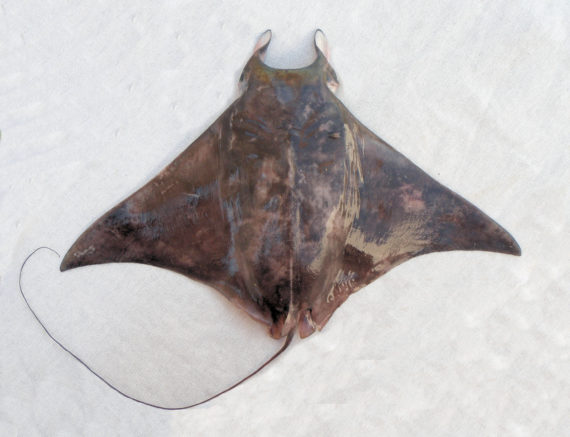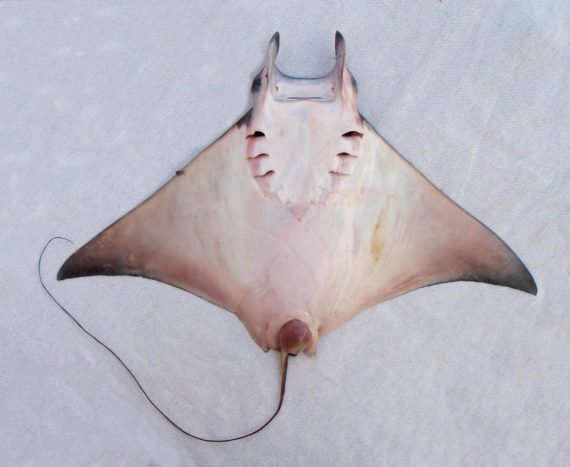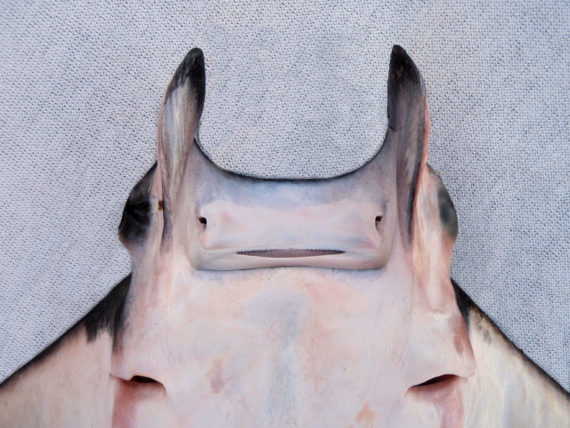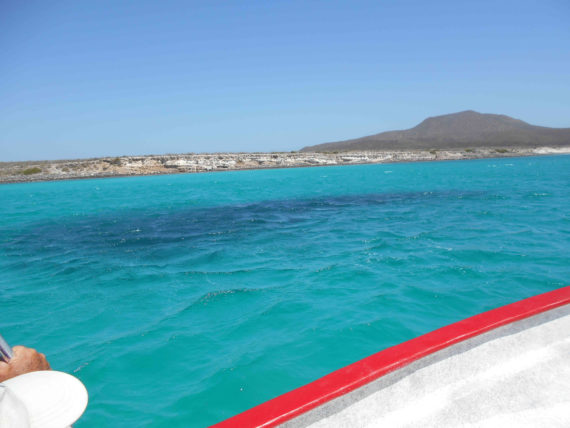Pygmy Devil Ray, Mobula munkiana


 Pygmy Devil Ray, Mobula munkiana. Fish caught off Point Palmilla, Baja California Sur, April 2013. Total length: 68 cm (27 inches). Disc: 62 cm (24 inches) x 27 cm (11 inches). Tail: 35 cm (14 inches).
Pygmy Devil Ray, Mobula munkiana. Fish caught off Point Palmilla, Baja California Sur, April 2013. Total length: 68 cm (27 inches). Disc: 62 cm (24 inches) x 27 cm (11 inches). Tail: 35 cm (14 inches).
 Pygmy Devil Ray, Mobula munkiana. Massive school found inshore in shallow water off Isla Coronado (greater Loreto area), Baja California Sur, April 2016.
Pygmy Devil Ray, Mobula munkiana. Massive school found inshore in shallow water off Isla Coronado (greater Loreto area), Baja California Sur, April 2016.
The Pygmy Devil Ray, Mobula munkiana, is a member of the Devil Ray or Manta Ray or Mobulidae Family, and is known in Mexico as manta chica. Globally, there are twelve species in the genus Mobula, of which five are found in Mexican waters, one in the Atlantic, three in the Pacific, and one in both the Atlantic and Pacific Oceans. In general, mobulas are poorly studied and often misidentified.
The Pygmy Devil Ray is the smallest of the devil rays and have strongly rhomboidal discs, which are much wider than they are long. They are black, purple or gray dorsally and white ventrally with the outer margin of their wings being blue-gray. They have a wide, projecting, and relatively short head with a pair of horn-like projections on either side. Their mouth is located on the underside and equipped with teeth set in bands on both jaws, which form a low pavement-like mosaic. Their pectoral fins form large triangular shaped “wings” that are sharply pointed and end above and just before the spiracles. A key to identification is their long slender tail that is slightly shorter than the disc width. Note: tail length versus disc width is an important marker for accurate identification, however, many mobulas lose parts of their tails fairly frequently which lessens the value of this parameter.
The Pygmy Devil Ray is a shallow water pelagic species found at depths up to 30 m (100 feet). They have a maximum wing span of 1.1 m (3 feet 7 inches). They can form highly migratory schools of several hundred individuals that follow the migration of their food sources in both coastal and pelagic waters. They are known for their acrobatics above water, including somersaults. They feed on planktonic crustaceans. In Mexico, they most commonly consume Krill, Nyctiphanes simplex. Reproduction occurs via ovoviviparity with internal fertilization. Each female has one pup per annum measuring 35 cm (13.8 inches) to 36 cm (14.2 inches) in length. Embryos are initially fed on yolk then receive additional nourishment from the mother by indirect adsorption of uterine fluid enriched with mucus, fat, and protein. They are born live as miniature adults. The Pygmy Devil Ray is poorly studied species with very limited information available about their lifestyle and behavioral patterns including specific details on catch, age, growth, movement patterns, diet, habitat use, lifespan, and range.
The Pygmy Devil Ray is a resident of Mexican waters of the Pacific Ocean but has a limited distribution being found throughout the Sea of Cortez and along the coast of the mainland south to Guatemala. They are absent from along the west coast of Baja.
The Pygmy Devil Ray is very similar to, and can be confused with, the Spinetail Mobula, Mobula japanica (large tail spine) and other juvenile mobulas.
From a conservation perspective the Pygmy Devil Ray is currently considered to be Near Threatened based on low and poorly documented global populations, misidentifications, very low fecundity rates (1 pup per year), high levels of juvenile mortality as by-catch of the trawl industry, high demand for mobula products in Asia, and aggregations in large numbers inshore making them highly vulnerable to unregulated fishing pressure throughout their range. The Pygmy Devil Ray has historically been caught at high levels by artisanal gill net fishermen.